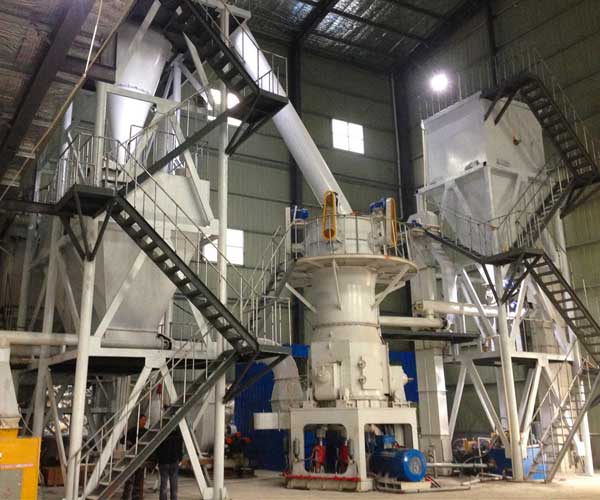
Ground calcium carbonate has emerged as a valuable and sustainable additive in the construction industry. Its incorporation in various building materials, such as cement, mortar, plastics, and roofing products, improves their performance, durability, and environmental friendliness.
24 Online Service
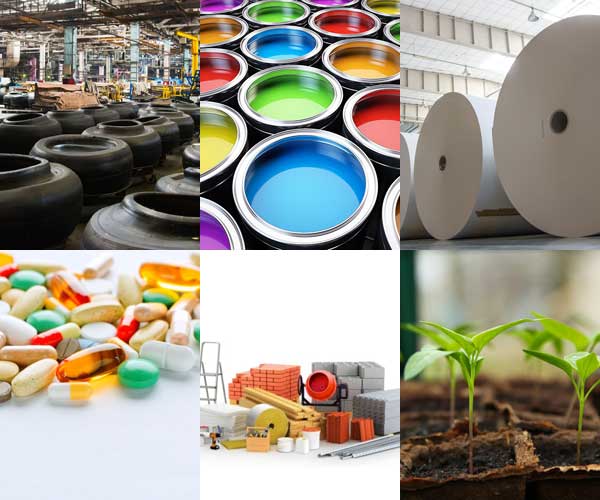
Ground Calcium Carbonate (GCC) is a versatile mineral compound that plays a significant role in various industries, including plastics, rubber, paper, paints, and construction. Derived from natural limestone deposits, GCC is a widely used additive and filler due to its unique properties and cost-effectiveness.
Ground Calcium Carbonate primarily consists of calcium carbonate (CaCO₃) crystals obtained from limestone. Limestone is a sedimentary rock formed over millions of years from the accumulation of marine organisms, such as coral, shells, and mollusks. These organic remains undergo compaction and lithification, resulting in limestone deposits rich in calcium carbonate.
The calcium carbonate crystals found in GCC possess a rhombohedral structure, which gives them unique properties such as whiteness, high brightness, and exceptional particle size distribution. The quality and characteristics of GCC can vary depending on the source of limestone and the processing techniques employed during extraction.
The construction industry is one of the major beneficiaries of ground calcium carbonate powder. It is widely used in the production of cement, concrete, and other construction materials. GCC powder acts as a filler and a reinforcing agent, enhancing the strength and durability of concrete structures. It improves the rheological properties of cement and serves as a cost-effective alternative to other additives.
Ground calcium carbonate powder finds extensive application in the plastics and rubber industries. It is employed as a filler and a strengthening agent in the production of various plastic products, including pipes, cables, and films. GCC powder enhances the mechanical properties of plastics, improves dimensional stability, and reduces production costs. Additionally, it imparts excellent abrasion resistance and stiffness to rubber compounds, making it an essential component in tire manufacturing.
The use of ground calcium carbonate powder in paints, coatings, and inks is well-established. It acts as an extender pigment, enhancing the opacity and brightness of the final product. GCC powder also contributes to the viscosity and stability of paints and coatings, ensuring better dispersion and suspension of pigments. Moreover, its fine particle size allows for a smooth finish and improved covering power.
The paper industry extensively relies on ground calcium carbonate powder for its manufacturing processes. It is utilized as a coating pigment, providing a smooth and printable surface to paper and paperboard products. The addition of GCC powder improves the optical properties of paper, such as brightness and opacity, while enhancing printability and reducing ink absorption. Furthermore, it acts as a paper filler, reducing costs and increasing the overall strength and stiffness of paper products.
Ground calcium carbonate powder finds applications in the pharmaceutical and nutraceutical industries as a calcium supplement. It is used in the production of dietary supplements and antacids, owing to its high calcium content and excellent bioavailability. Additionally, GCC powder serves as an excipient in tablet formulations, providing bulk and enhancing the dissolution characteristics of active ingredients.
Agricultural and horticultural sectors benefit from the application of ground calcium carbonate powder in various ways. It is used as a soil conditioner to adjust soil pH levels and enhance nutrient uptake by plants. GCC powder can also be employed as a component in animal feed, providing a valuable source of calcium for livestock and improving their overall health.
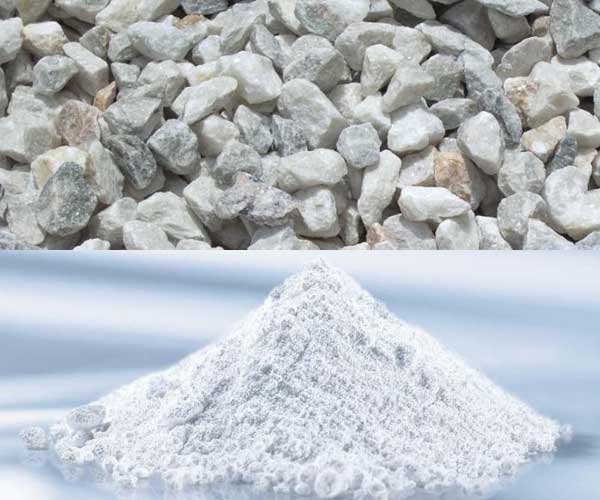
Calcium carbonate is a versatile mineral that finds its applications in various industries, including construction, paper, plastics, and pharmaceuticals. It is commonly found in two forms: ground calcium carbonate (GCC) and precipitated calcium carbonate (PCC). While both GCC and PCC are derived from calcium carbonate, they possess distinct characteristics and are produced through different processes. Understanding the differences between these two forms is crucial for choosing the most suitable product for specific applications.
Ground Calcium Carbonate (GCC): GCC is naturally occurring and primarily obtained through the mining and processing of limestone deposits. Limestone, composed mainly of calcium carbonate, undergoes grinding and classification to produce fine particles of GCC. It is available in various grades based on particle size and purity.
Precipitated Calcium Carbonate (PCC): PCC, on the other hand, is synthetically produced through a chemical precipitation process. It starts with the reaction of calcium hydroxide and carbon dioxide to form calcium carbonate precipitates. These precipitates are then filtered, washed, and dried to obtain PCC in a powdered form. The chemical precipitation process allows for precise control over particle size, morphology, and purity.
GCC: Ground calcium carbonate typically has larger particle sizes compared to PCC, ranging from fine powders to granules. The particle size distribution of GCC is determined by the grinding and classification processes used during its production. The morphology of GCC particles is irregular and varies depending on the source material and processing techniques employed.
PCC: Precipitated calcium carbonate offers more control over particle size and morphology. The particles are generally smaller, with a narrower size distribution. The synthetic production process allows for the production of finely divided and uniform particles. PCC particles exhibit a more regular and spherical morphology, resulting in improved dispersibility and packing characteristics.
GCC: Ground calcium carbonate is available in varying levels of purity depending on the source and processing methods. It may contain impurities like silica, iron, magnesium, and other minerals present in the natural limestone deposits. The whiteness of GCC is also influenced by the impurities, which can affect its suitability for certain high-purity applications.
PCC: Precipitated calcium carbonate can achieve higher levels of purity compared to GCC due to the controlled synthesis process. The chemical precipitation method allows for the removal of impurities, resulting in a purer product. PCC exhibits excellent whiteness and brightness, making it suitable for applications that require high levels of purity and color consistency.
GCC: Ground calcium carbonate is known for its high brightness, opacity, and light scattering properties. It is widely used as a filler in paper, paints, plastics, and rubber, where its particle size and irregular morphology contribute to improved strength and opacity. GCC is also utilized as a dietary supplement in the form of calcium tablets or antacids.
PCC: Precipitated calcium carbonate offers unique performance characteristics due to its smaller particle size, uniformity, and controlled morphology. Its fine particles and spherical shape enhance the dispersibility and suspension properties in various applications. PCC finds extensive use as a functional additive in paper coatings, paints, adhesives, sealants, and plastics, where its high brightness, smoothness, and improved rheological properties are highly valued.
GCC: Ground calcium carbonate is generally more cost-effective compared to precipitated calcium carbonate. It is widely available in large quantities due to its natural abundance and mining operations. The cost of GCC may vary depending on factors such as processing, transportation, and impurity content.
PCC: Precipitated calcium carbonate is produced through a more complex chemical process, making it relatively more expensive compared to GCC. PCC production requires specialized equipment, controlled conditions, and chemical inputs, resulting in higher production costs. The availability of PCC may also be influenced by factors like production capacity and demand.
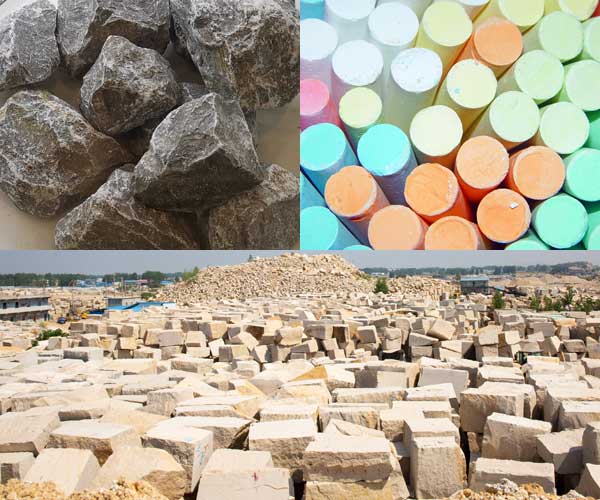
Ground calcium carbonate (GCC) powder is a versatile material known for its excellent physical and chemical properties, making it an essential component in numerous products and processes. The production of high-quality GCC powder relies on the careful selection and processing of raw materials.
Calcium carbonate, the primary ingredient of GCC powder, is a naturally occurring compound that can be found in various forms, including limestone, chalk, and marble. These forms differ in their chemical composition, purity, and physical properties, which can influence the characteristics of the final GCC powder. Let’s delve into the most common raw materials used in GCC powder production:
Limestone is the most abundant source of calcium carbonate and serves as a fundamental raw material for GCC powder production. It is a sedimentary rock composed mainly of calcite (CaCO3). The quality of limestone depends on factors such as its purity, whiteness, and the absence of impurities like silica, iron oxide, and magnesium carbonate. Limestone quarries are carefully selected based on these criteria to ensure the production of high-quality GCC powder.
Chalk is a soft, porous, and easily pulverizable form of limestone. It is typically white and primarily consists of microscopic shells of marine organisms called coccoliths. Chalk deposits are formed in deep-sea environments and often found in large quantities. Its natural properties make it suitable for GCC powder production, especially for applications where whiteness and fineness are crucial.
Marble is a metamorphic rock that forms from the recrystallization of limestone under high temperature and pressure. It is characterized by its distinct veining patterns and vibrant colors. While marble is widely used for decorative purposes, certain varieties with high calcium carbonate content and suitable characteristics are selected for GCC powder production. Marble provides a range of options in terms of color, brightness, and particle size distribution, allowing for the production of tailor-made GCC powders.
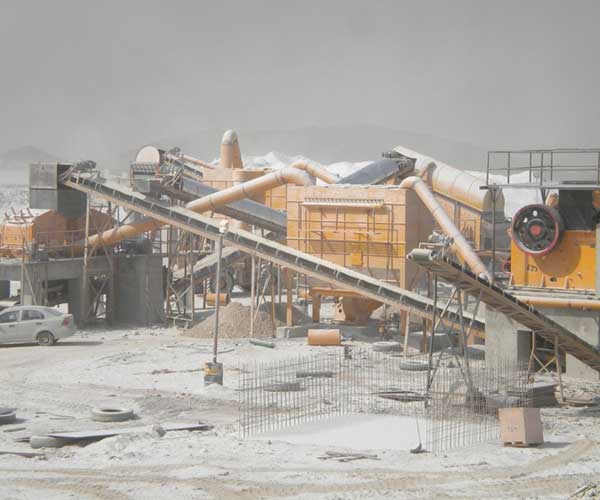
It serves numerous industrial applications and is particularly prevalent in the production of paper, plastics, paints, coatings, and even food and pharmaceuticals. Ground calcium carbonate (GCC) is a versatile form of this mineral, widely used for its unique physical and chemical properties.
The extraction of calcium carbonate typically begins with the quarrying of limestone deposits. Limestone, a sedimentary rock composed mainly of calcium carbonate, serves as the primary source material. Quarrying involves drilling, blasting, and excavating large blocks or fragments of limestone from the earth’s crust.
Once extracted, the limestone undergoes crushing and grinding processes to reduce its particle size and prepare it for further refinement. Initially, large pieces of limestone are transported to a primary crusher, where they are broken down into smaller fragments. This primary crushing step can be accomplished using various types of crushers, such as jaw crushers, impact crushers, or cone crushers.
Subsequently, the fragmented limestone undergoes further grinding to achieve the desired particle size. The crushed limestone is transferred to grinding mills, which utilize rotating drums or vertical roller mills to pulverize the material into a fine powder. These mills employ mechanical forces to break down the limestone particles and reduce them to the desired fineness.
The next crucial stage in the production of ground calcium carbonate involves the transformation of the powdered limestone into precipitated calcium carbonate (PCC). This process is typically carried out in a controlled environment, such as a laboratory or a specialized facility.
To initiate the precipitation, the powdered limestone is suspended in water, and a calcium hydroxide solution (lime milk) is added. The reaction between calcium carbonate and calcium hydroxide results in the formation of a suspension comprising calcium carbonate particles.
The suspension is then subjected to a series of separation and purification steps to remove impurities. Centrifuges or settling tanks are employed to separate the solid calcium carbonate from the liquid phase. Further purification processes, such as filtration or chemical treatment, may be applied to enhance the quality and purity of the precipitated calcium carbonate.
After purification, the wet precipitated calcium carbonate is subjected to drying to remove the remaining moisture. Various drying methods, such as spray drying or flash drying, can be employed based on the production requirements. These methods involve the application of heat or air currents to evaporate the water, leaving behind the dry calcium carbonate particles.
The dried precipitated calcium carbonate is then subjected to grinding processes to achieve the desired particle size distribution. This grinding step ensures that the final product meets the specific requirements of different industries. The ground calcium carbonate is typically classified into different grades based on its particle size and distribution.
The final product, ground calcium carbonate, is packaged and prepared for distribution. The packaging can vary depending on the application and customer requirements. It is commonly available in bulk bags or smaller bags for convenience and ease of handling.
Ground calcium carbonate is distributed to various industries where it finds application in a multitude of products. It serves as a filler and pigment in paper, providing enhanced brightness, opacity, and smoothness. In the plastics industry, it acts as a reinforcing agent, improving strength, dimensional stability, and impact resistance. Additionally, ground calcium carbonate is used in the production of paints, coatings, adhesives, sealants, and various construction materials.
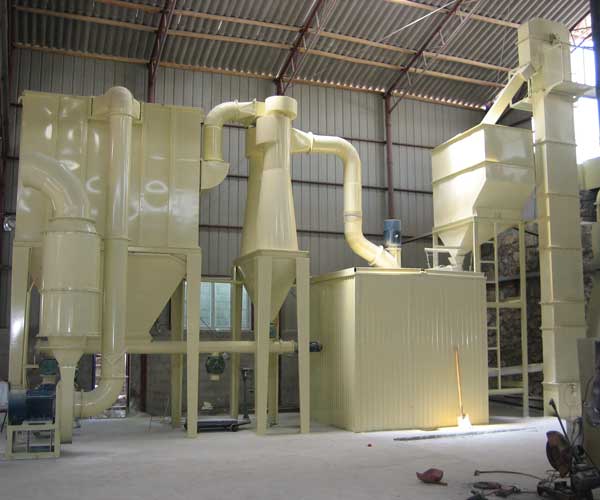
Building materials play a crucial role in the construction industry, providing the foundation for the structures we live, work, and play in. One essential component that has gained prominence in recent years is ground calcium carbonate (GCC). GCC is a versatile and sustainable mineral used in various building materials, contributing to their durability, performance, and environmental friendliness.
Ground calcium carbonate is a naturally occurring mineral derived from limestone, marble, or chalk deposits. It is processed into a fine powder through grinding and pulverization. The resulting GCC exhibits remarkable physical and chemical properties that make it an excellent additive in the production of building materials.
One of the primary uses of ground calcium carbonate in the construction industry is as a filler in cement and concrete. Due to its high purity and fine particle size, GCC enhances the workability and rheological properties of cementitious materials. It improves the flowability of concrete during pouring and reduces the water demand, resulting in higher strength and reduced cracking potential. Additionally, GCC acts as a nucleation site for the formation of hydration products, contributing to the overall durability and long-term performance of concrete structures.
In the realm of masonry, ground calcium carbonate finds application in the production of lime mortar. Lime mortar, a traditional building material, offers excellent breathability and flexibility, allowing for the natural expansion and contraction of masonry. By incorporating GCC into lime mortar formulations, the resulting mixture gains improved workability, reduced shrinkage, and increased strength. Moreover, the carbonation process of lime mortar, where carbon dioxide reacts with calcium hydroxide to form calcium carbonate, results in the recrystallization of GCC, reinforcing the mortar matrix and enhancing its mechanical properties.
Furthermore, ground calcium carbonate serves as a reinforcing agent in the manufacturing of construction plastics and composites. When added to polymers, GCC enhances their strength, impact resistance, and dimensional stability. It also acts as a nucleating agent, promoting crystallization and reducing the cycle time required for processing plastic materials. Incorporating GCC into construction plastics not only improves their performance but also reduces the overall carbon footprint, as calcium carbonate is abundant and widely available in nature.
Another noteworthy application of ground calcium carbonate is in the production of roofing materials. GCC is used as a coating pigment in asphalt shingles and roofing tiles to enhance their weatherability and resistance to UV radiation. The fine particles of GCC act as scattering agents, reflecting and diffusing sunlight, thereby reducing heat absorption and prolonging the lifespan of the roof. Moreover, the incorporation of GCC in roofing materials contributes to their fire resistance and thermal insulation properties.
From an environmental standpoint, ground calcium carbonate offers several advantages over alternative materials. Firstly, it is sourced from abundant and naturally occurring limestone deposits, minimizing the need for energy-intensive extraction processes. Additionally, the production of GCC requires less energy and emits fewer greenhouse gases compared to synthetic additives. Moreover, the use of GCC in building materials contributes to the reduction of carbon dioxide emissions through the carbonation process, where calcium hydroxide absorbs CO2 and transforms into calcium carbonate.
Our Projects
Copyright © ZENITH, All Right Reserved.
